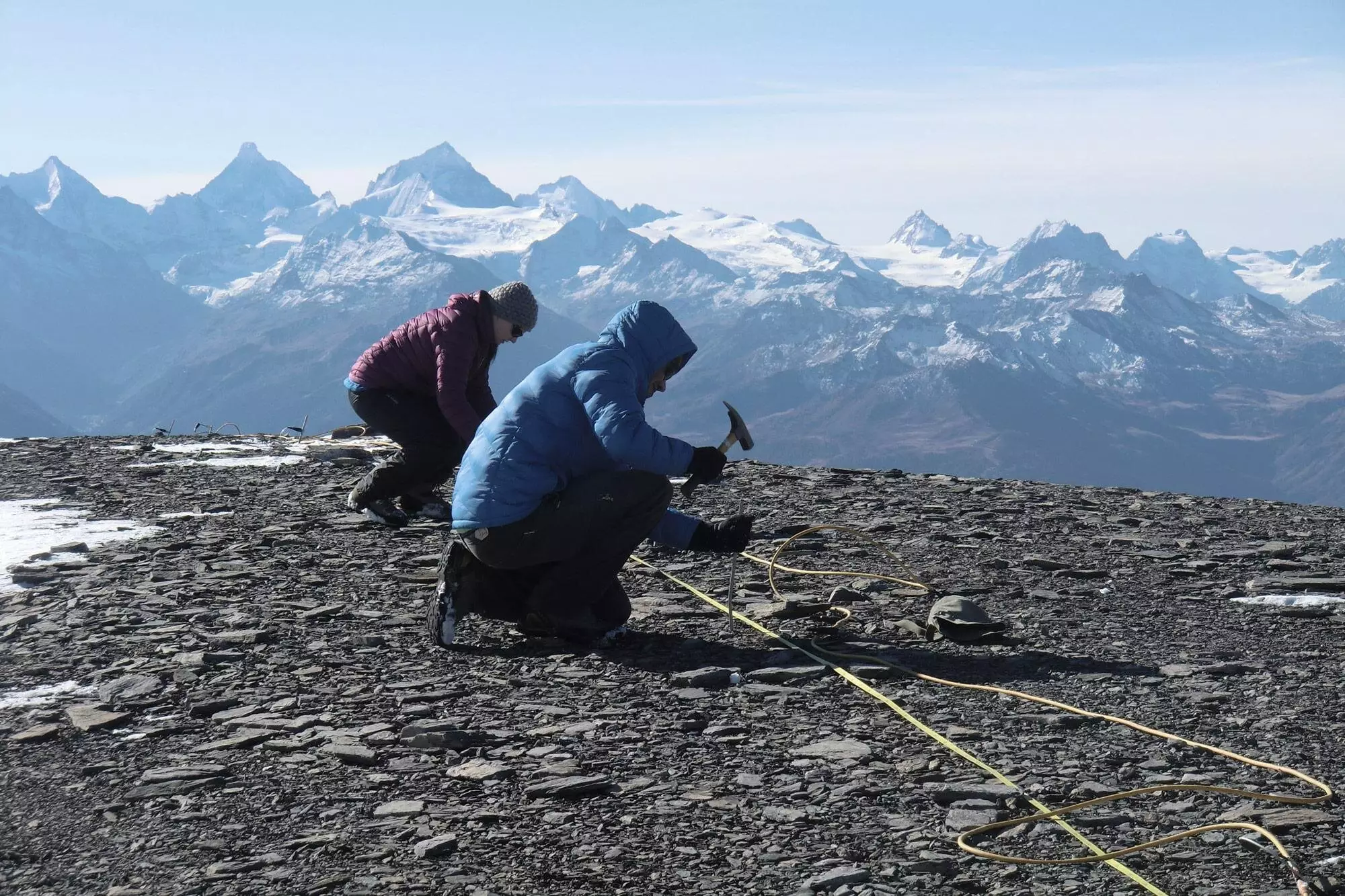The gradual disappearance of glaciers in the Alps is a well-documented phenomenon that is visible to us all. However, what is less obvious is the thawing of the alpine bedrock and its potential consequences. When permafrost in the mountains starts to melt, it can lead to destabilization of mountain slopes, changes in the landscape, and pose risks to both people and infrastructure. Swiss researchers have been monitoring the state of permafrost in the Alps for many decades to understand and anticipate these changes.
Traditional methods of monitoring permafrost involve drilling holes up to 100 meters deep to measure ground temperatures. However, this process is time-consuming, expensive, and particularly challenging at high altitudes. Geoscientist Christian Hauck and his team at the University of Fribourg have developed a non-invasive measurement method that uses electrical resistivity to assess permafrost over large areas. By conducting electrical current through the ground and measuring the resistivity, researchers can determine the presence of water in liquid or frozen form and quantify the amount of ice present.
The method developed by Hauck and his team involves placing electrodes on the ground and measuring the electrical resistivity at various depths. By analyzing the data collected from these measurements, researchers can create three-dimensional images of permafrost distribution. While challenges exist, such as the complexities introduced by factors like rock layers and slope inclination, the model for calculating permafrost distribution is continuously improving.
Recent studies have shown alarming trends in the melting of alpine permafrost. Temperatures in boreholes have increased by approximately 1°C over the last two decades, causing permafrost to be located several meters deeper in the ground. The loss of permafrost has been quantified for the first time using resistivity measurements, revealing that about 15% of ice was lost between 2015 and 2022. Additionally, research has indicated that even a single hot summer can lead to irreversible loss of permafrost in the mountains, with subsequent cold winters unable to compensate for the damage.
Hauck’s research has led him to believe that many alpine regions have already reached or are nearing a tipping point regarding permafrost loss. Once this point is reached, the disappearance of permafrost can accelerate uncontrollably and may result in increased rockfalls and landslides in previously stable areas. It is crucial to develop methods that can predict these tipping points early and reliably to mitigate the risks associated with thawing permafrost.
The impact of melting alpine permafrost extends far beyond environmental changes. It poses real risks to human lives and infrastructure, emphasizing the urgent need for proactive monitoring and predictive modeling to prevent potential disasters. By understanding the nuances of permafrost thaw and its consequences, researchers can work towards developing strategies to adapt to and mitigate the effects of climate change in mountainous regions.


Leave a Reply